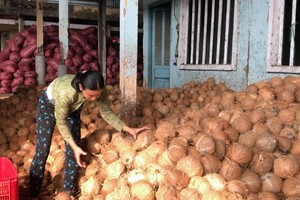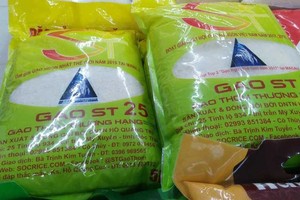
The announcement was made during a trade promotion conference held on May 30 by the Ministry of Industry and Trade, which brought together Vietnam’s overseas trade offices. The event aimed to boost export activities in the leather, footwear, and textile industries.
Ms. Phan Thi Thanh Xuan, Vice Chairwoman and Secretary General of LEFASO said that Asia currently accounts for 87 percent of global footwear production, generating approximately 23 billion pairs annually.
Of these, China leads the industry with approximately 13 billion pairs, followed by India with over 2.6 billion pairs and Vietnam with more than 1.4 billion pairs. Notably, Vietnam achieved a high export ratio of 90 percent and 95 percent of the country’s footwear output, a figure significantly higher than that of other major producers, which primarily serve domestic markets.
In the first four months of 2025, Vietnam’s exports of footwear and handbags rose by over 16 percent, driven by strong demand from key markets such as the United States, the European Union, and Japan. The US alone accounted for nearly 40 percent of the sector’s total export turnover.
Vietnam has solidified its role as a major manufacturing hub in the global supply chain, attracting orders from leading international brands including Nike, Adidas, Puma, and Skechers. Notably, Vietnam is responsible for producing around 50 percent of Nike’s global output and approximately 30 percent of Adidas products.
Remarkably, the proportion of exports contributed by domestic enterprises rose to 28 percent in early 2025, showing a sign that Vietnam’s homegrown manufacturing capacity is steadily improving instead of relying on foreign-invested enterprises (FDIs) as before.
However, the sector also faces many challenges, such as global economic uncertainties and trade barriers from major markets, particularly from the United States; increasing labor, raw material, and logistics costs; dependency on imported materials with the overall localization rate reaching only around 55 percent. The figure is slightly higher at nearly 70 percent for athletic footwear.
Another challenge comes from international requirements for green production, emissions reduction, and supply chain traceability, especially the European Union’s Carbon Border Adjustment Mechanism (CBAM), which imposes new environmental standards on imports.
Despite these headwinds, LEFASO said that Vietnam retains substantial advantages in terms of geopolitics, manufacturing capabilities, and credibility within the global supply chain. With over three decades of industry development, a skilled labor force, and a modern production system, Vietnam is well-positioned to maintain and even strengthen its role as one of the world’s leading footwear exporters if it takes advantage of opportunities and overcomes challenges strategically.















)

)






